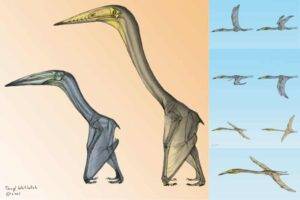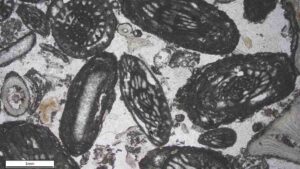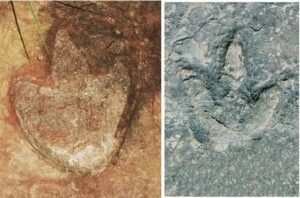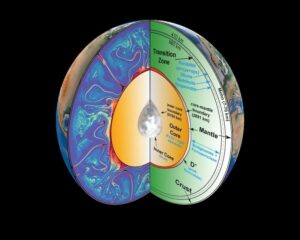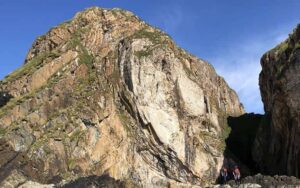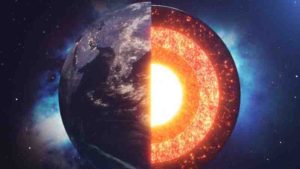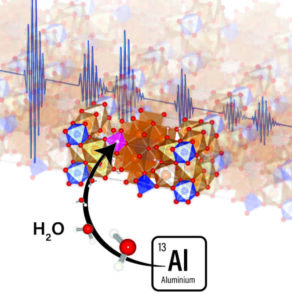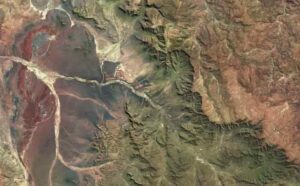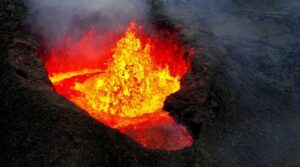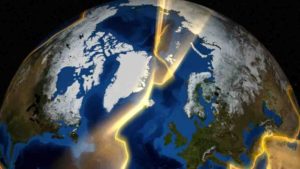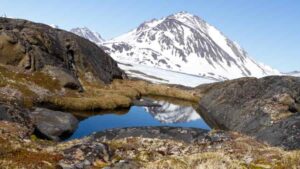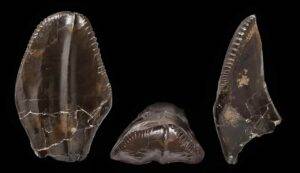
At the end of the Cretaceous, the duck-billed hadrosaurs were the most advanced herbivores on Earth. New research has revealed just how voracious these dinosaurs were, with their average tooth worn away in less than two months as they consumed enormous amounts of plants. Some of Earth’s most successful herbivores may have had hundreds of thousands of teeth in their lifetime.
The ornithopods are a group of dinosaurs that include Iguanodon, Hypsilophodon and their relatives, including the rare rhabdodontids. Ornithopods first appeared in the Middle Jurassic but were most prominent in the Cretaceous, when they became the dominant herbivores across large parts of the world.
This journey took them from small generalists to becoming large and specialized “plant-eating machines” which rival modern cows and sheep. The research, led by Dr. Attila Ősi from Eötvös Loránd University in Hungary, shows that the dinosaurs achieved this following the evolution of vast numbers of replacement teeth, which allowed them to eat even the toughest of plants in large quantities.
“The teeth and jaws of the ornithopods changed drastically during their evolution,” Attila says. “Earlier members of the group, like Iguanodon, took more than 200 days to form their teeth and at least that long to wear them down by chewing. But by the end of the Cretaceous, hadrosaurs would wear through their teeth in as little as 50 days.”
“We think this is because the later ornithopods must have been feeding on tough plants that rapidly eroded their teeth. As they wore away at a huge rate, these dinosaurs would have needed to build up banks of teeth in their skulls to stop themselves from starving.”
The findings of the study are published in the journal Nature Communications.
Becoming the top dinosaur herbivores
While herbivory is one of the most common ways of life for animals, it’s surprisingly difficult to eat plants. Unlike meat, which is easily broken down in the gut, plants are generally made up of tough fibers and complex carbohydrates which are hard to digest.
Teeth are on the front line of this dietary battle, breaking open plants and cutting them into smaller pieces so that gut bacteria can break them down more efficiently. However, as co-author Professor Paul Barrett explains, this takes its toll on the teeth.
“Across a herbivore’s life, its teeth gradually wear down,” Paul says. “This puts an upper limit on the life of some mammals, like elephants or cows. Once their teeth are gone, the animal can no longer feed, and so it dies.”
“This isn’t a problem for reptiles. They are able to continually make new teeth, with a replacement ready to surface from beneath as soon as its predecessor wears out. As a result, dinosaur teeth are common fossils, making them a valuable way to investigate how these animals evolved.”
The team were particularly interested in investigating the teeth and jaws of the ornithopods, which eventually became some of the most advanced herbivores to have ever lived on our planet. By examining well-preserved skulls, they were able to track how the dinosaurs’ skulls developed into increasingly complex forms that were better suited to eating plants.
“We can see a sequential increase in the complexity of their adaptations for herbivory as they evolve,” Paul explains. “At the start, they had single rows of fairly simple teeth with limited wear, probably because these dinosaurs focused on fruits and softer plants.”
“By the time the hadrosaurs evolved, they had vastly more teeth which developed a large blade-like edge on one side and a series of ridges behind it. This structure is unique to these dinosaurs, and kept the upper and lower teeth sharp as they ground against each other.”
Later ornithopods also moved their jaws in new ways, being able to slide them back and forth and side to side, allowing them to grind plants down even further. Their bodies also grew much bigger, allowing them to accommodate larger guts that can more effectively release the nutrients inside plants.
Different dinosaurs took different approaches to herbivory. But the team noticed that a few groups of ornithopods, like the tenontosaurids and their more advanced iguanodontian relatives, all follow a strikingly similar evolutionary path. They believe this is an example of convergent evolution.
“About 110 million years ago, these ornithopods rapidly evolved a series of similar characteristics,” Paul explains. “Their teeth increase in number, their jaws interlock more tightly and they build up more replacement teeth, making them more effective herbivores.”
“We also see this happen in the horned dinosaurs, which include species like Triceratops. It’s tempting to speculate that these changes happened for similar reasons.”
Could flowers be responsible?
While the evidence that the environment changed in the Early Cretaceous is strong, finding out exactly what happened is challenging. To try and reveal potential causes, the team examined worn areas of dinosaur teeth, known as wear facets, for signs of microscopic changes.
“Before the Early Cretaceous, ornithopod teeth had a lot of large pits,” Attila says. “This suggests that they were eating a large amount of plant seeds, as well as potentially consuming a lot of dust and soil by feeding close to the ground.”
“Later forms have fewer pits, with many more scratches instead. This suggests that they were now eating harder plants, or feeding in a different way.”
Rather than the dinosaurs actively changing what they ate, one possible explanation could be that certain plants became more common. It’s possible that the rise of flowers could be responsible, but it doesn’t quite fit the available evidence.
“While it is suspicious that the flowering plants start to diversify around this time, they were still pretty uncommon at the time,” Paul says. “In fact, until the Late Cretaceous, horsetails, ferns and conifers would be much more common for dinosaurs looking for something to eat.”
“As it’s very difficult to disentangle the plant and dinosaur fossil records, it’s unlikely we’ll ever have enough detailed evidence to prove there is a link, even if it is a very interesting idea.”
Having finished their work on the ornithopods, the team hope to gradually widen their research to other herbivorous dinosaurs, like the ankylosaurs or the horned dinosaurs. This could give us a better idea of why these reptiles were so successful, and how evolution shaped the diet of the different groups.
“We’d like to be able to sample other dinosaurs to see if the trend of increasing body size, tooth number and the change in teeth wear we found in the ornithopods is more widespread,” Attila says. “If we can find out what changes herbivores were going through at the time, it will give us a much better chance of understanding the place of these dinosaurs in the ecosystems of the Mesozoic Era.”
Reference:
Attila Ősi et al, Trophic evolution in ornithopod dinosaurs revealed by dental wear, Nature Communications (2024). DOI: 10.1038/s41467-024-51697-9
Note: The above post is reprinted from materials provided by Natural History Museum.


